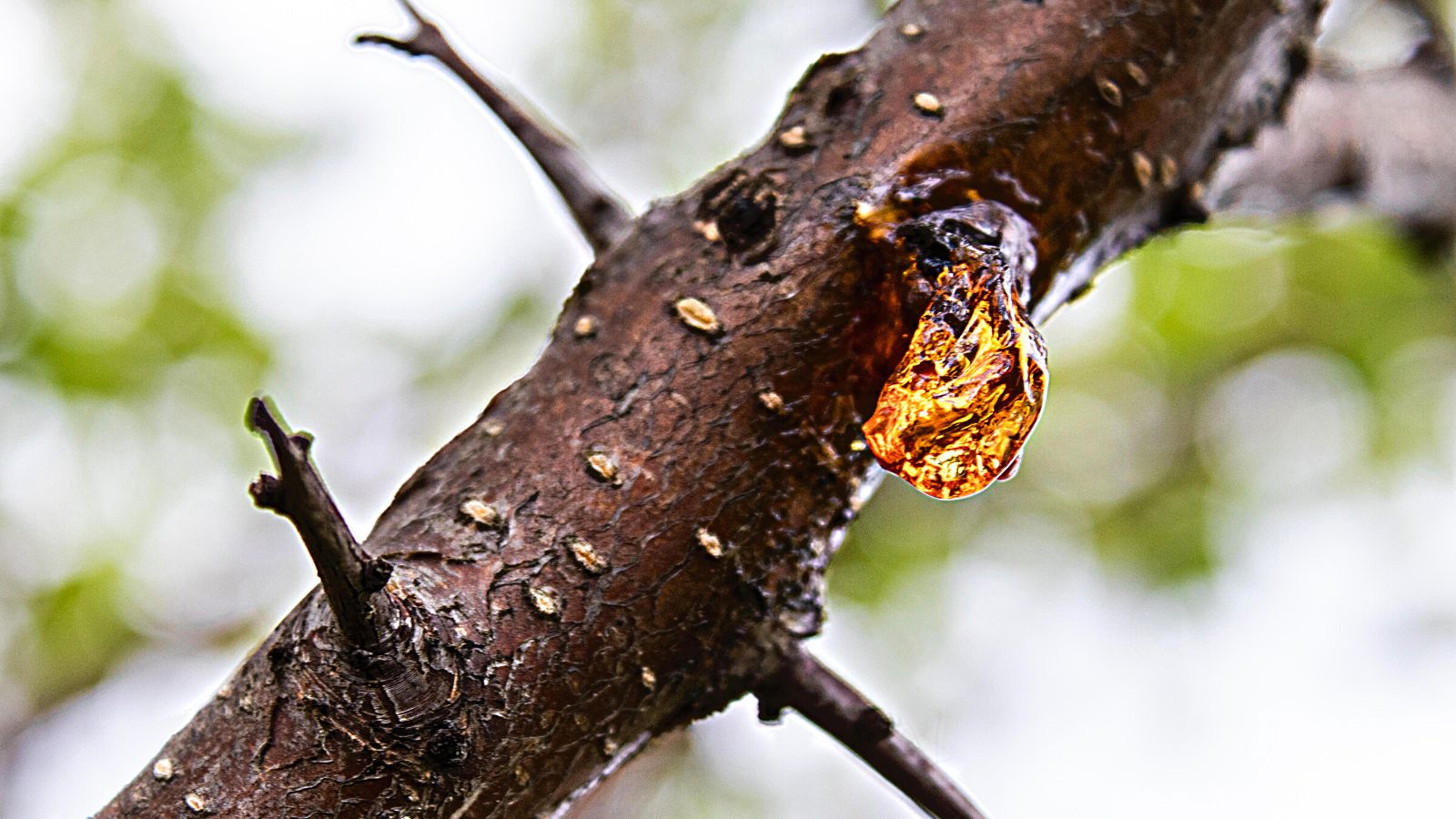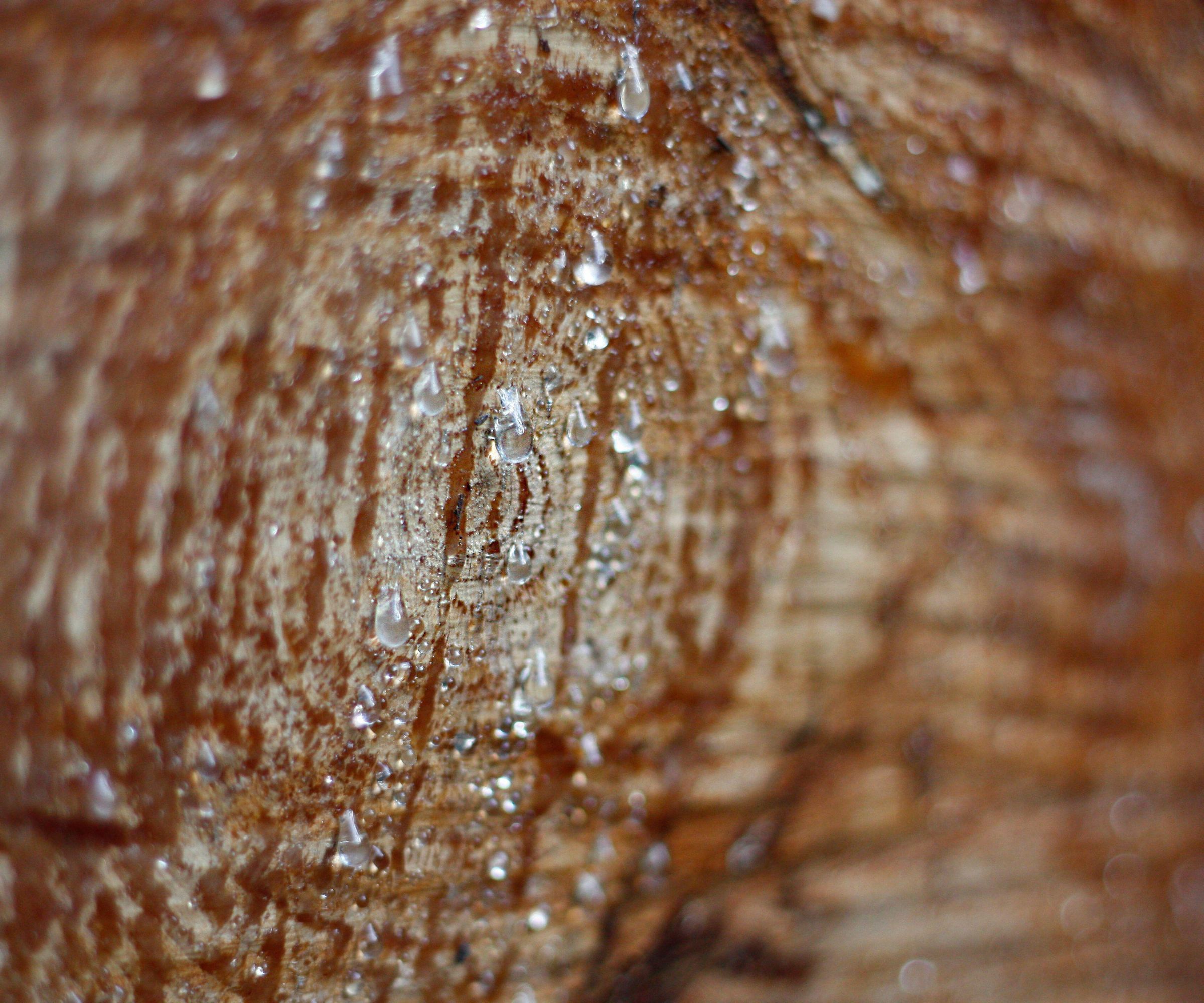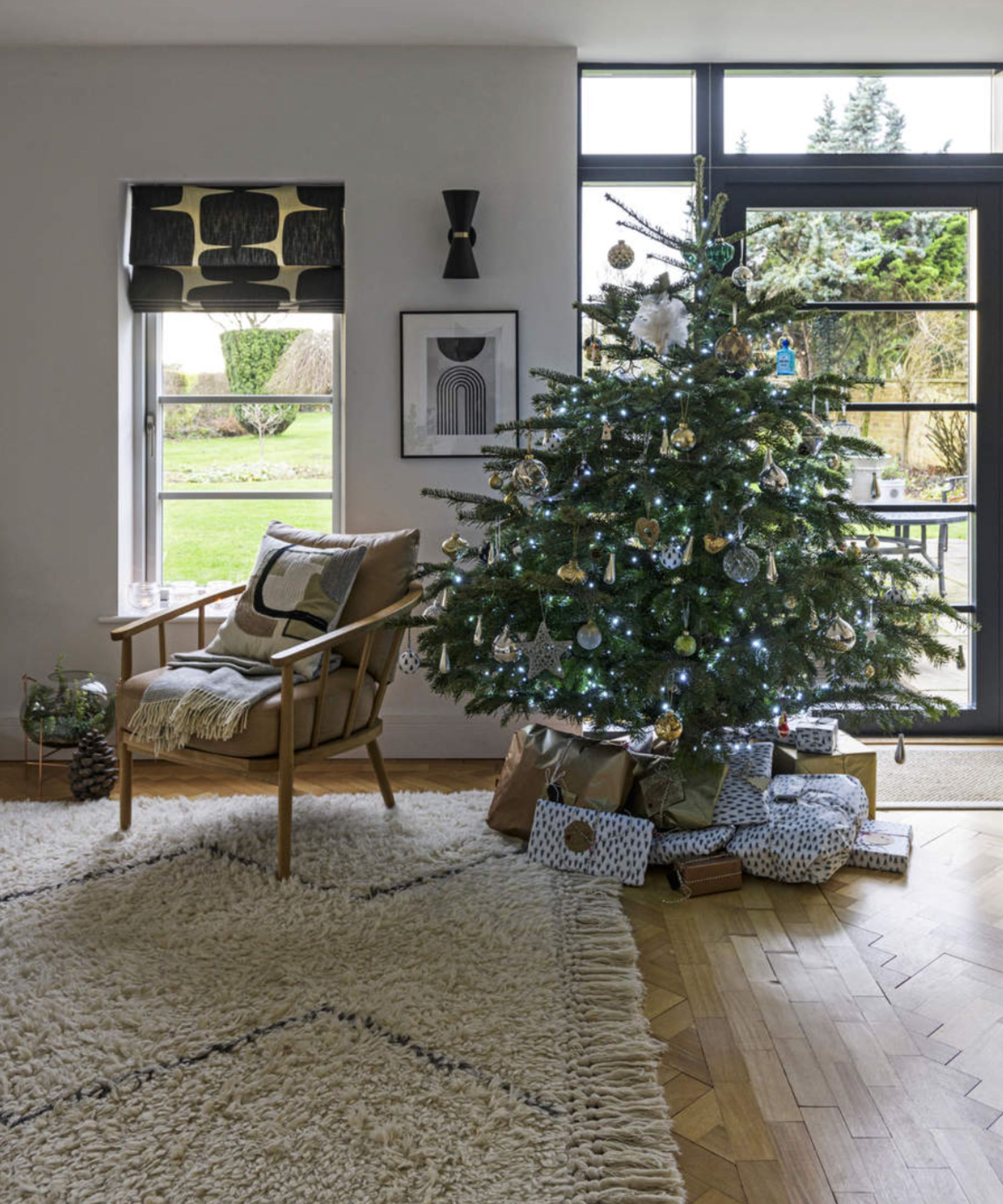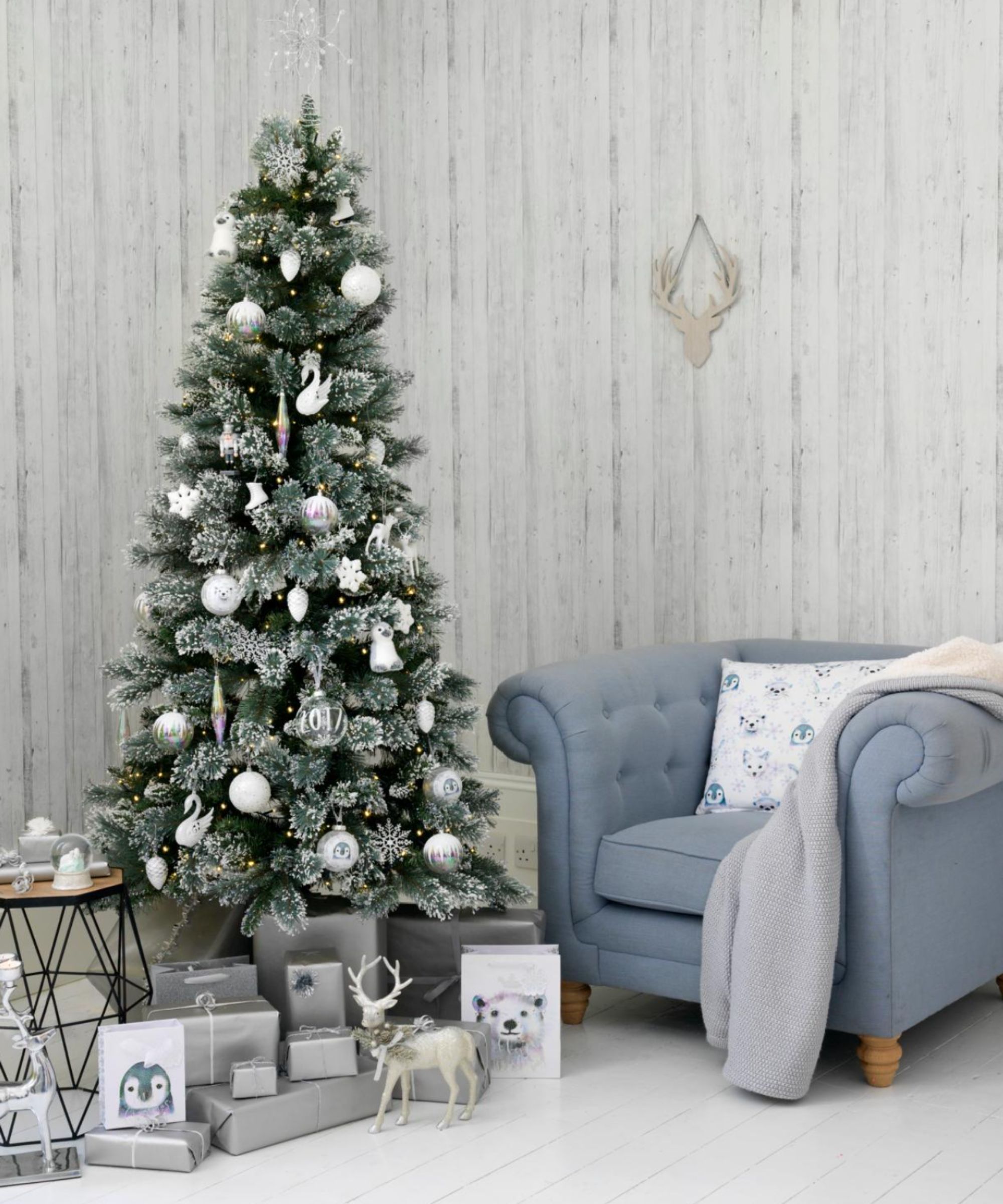Christmas tree leaking sap and resin? Here's how to clean it before it damages your floors and furniture
Take these steps fast to avoid lasting damage, and keep pets well away from it


Real Christmas trees look beautiful, but they can leak sap and resin, which can cause damage to your furniture and flooring, and which is toxic to pets. Getting rid of sap and resin fast is, therefore, a must.
The good news is that it is relatively simple to clean up – as long as you can tell Christmas tree sap and resin apart, experts say. Getting it wrong could make the damage worse, they also warn.
Here, we speak to experts to learn how to tell the difference between the sap and resin, and how to properly clean them both up.
The difference between tree sap and pine resin

Christmas tree resin leaking from a cut stump
It is a common misconception that tree sap and pine resin are the same things, which can lead to improper cleaning techniques and possible damage to your furniture and floors.
‘Sap can cause serious issues that are best addressed sooner rather than later,’ says Jon Ashbrook, head of product management at luxury wood flooring specialists Ted Todd. ‘While it may be a pain to be cleaning during peak festivities, there are some simple measures you can take to stop your floor from getting damaged.
‘Sap is more watery whilst resin is thicker and also stickier, but both cause issues,’ he explains. Another way to tell the two apart is by the color: tree sap is usually white or clear whereas resin is a golden color.
‘Stains can prove troublesome on a floor but there are some simple solutions to help rectify the problem quickly. Placing pads underneath to prevent needless damage, for example.’
Design expertise in your inbox – from inspiring decorating ideas and beautiful celebrity homes to practical gardening advice and shopping round-ups.
Christmas tree skirts can play a more decorative role in catching sap, but if you have left your floor uncovered, the best solution is to effectively clean the area as soon as you notice the sap. Here's how.
How to remove sap and resin from wooden floors

Removing sap is simpler than removing resin.
To remove sap from wood floors, ‘create a warm soapy solution and carefully use a soft cloth to gently rub the stain. Once the sap has loosened and comes off, you should use a microfiber cloth or mop to dry the area,' Jon Ashbrook says.
‘It is important not to allow too much water on the floor and to dry it promptly so that it doesn’t warp and the finish is preserved,’ Jon warns if you are cleaning hardwood floors.
To remove resin from wood floors, use a cloth or cotton ball soaked in undiluted rubbing alcohol to dab at the resin deposit and dissolve the residue. This should then lift away from the surface easily, allowing you to use warm soapy water to polish the area to remove staining.
‘You should always avoid using sharp tools to remove resin as it could scratch the floor,’ Jon advises, even though it may seem like the easy way out.
How to remove sap and resin embedded in the carpet

If you want to avoid deep cleaning a carpet at Christmas, then spot-checking the area around your tree is vital to help remove resin and sap spots as and when they appear.
As with cleaning an area rug, it is important to know which material you are working with first to make sure the solutions you use won’t cause more damage than the sap or resin.
It is important to prevent getting the sap or resin wet when cleaning it out of carpets and rugs. The trick is to freeze the residue with an ice cube or ice block for 15 to 20 minutes to harden the mark before using a blunt knife or spoon to scrape and lift the sap or resin away from the fibers.
Once the bulk of the droplet has gone, it is a good idea to use warm water and dish soap or a conventional carpet cleaning solution to remove any stubborn discoloration.
At the same time, it's also advised to get pine needles out of carpets and rugs before they become embedded and tricky to remove.
How to remove sap and resin from upholstery

Removing sap and resin from furniture is not too different from cleaning upholstery generally and starts with understanding what material you are working with.
The secret to removing sticky resin and sap from upholstery is to saturate the area with a lubricant so the sticky residue can slide away.
Rubbing or dabbing the area with a liquid dish detergent will often be enough to lift the substance away from the fibers but sometimes a mineral oil will be required for older, stuck-on stains – just make sure to test the oil on an inconspicuous area before committing to a part of your furniture visible on a daily basis.
Does Dawn dish soap remove tree sap?
Dish soap can be effective in removing tree sap from hard surfaces such as wood or tile floors if the sap is fresh and still sticky, but will not do much if the sap has hardened. To remove fresh sap, apply a dab of soap to the sap mark before using a cloth dampened with warm water to lift the sap and its residue from the floor.
What will dissolve sap?
To dissolve tree sap from fabric and hard surfaces, use undiluted rubbing alcohol. Using a cloth or cotton ball soaked in the solution, dab the sap mark to lift the residue and release it from fabrics, flooring, skin, and hair. If this is the first time trying this method, it may be a good idea to do a small spot check on a hidden area first to make sure the alcohol doesn't react with the surface or cause staining.
Is Christmas tree sap poisonous for pets?
Not only is tree sap poisonous to pets, Christmas trees are classed as plants that are toxic to cats and poisonous for dogs, if ingested. This includes not just the sap, which contains a pinene, which is toxic to pets, but the needles, branches and even Christmas tree water. Signs your pet may be suffering as a result include vomiting and diarrhea, drooling, breathing difficulties, lethargy, muscle weakness and lack of appetite. Christmas trees are not dangerous to pets if they simply brush past them, however.

Chiana has been at Homes & Gardens for two years and is our resident 'queen' of non-toxic living. She spends most of her time producing content for the Solved section of the website, helping readers get the most out of their homes through clever decluttering, cleaning, and tidying tips. She was named one of Fixr's top home improvement journalists in 2024.